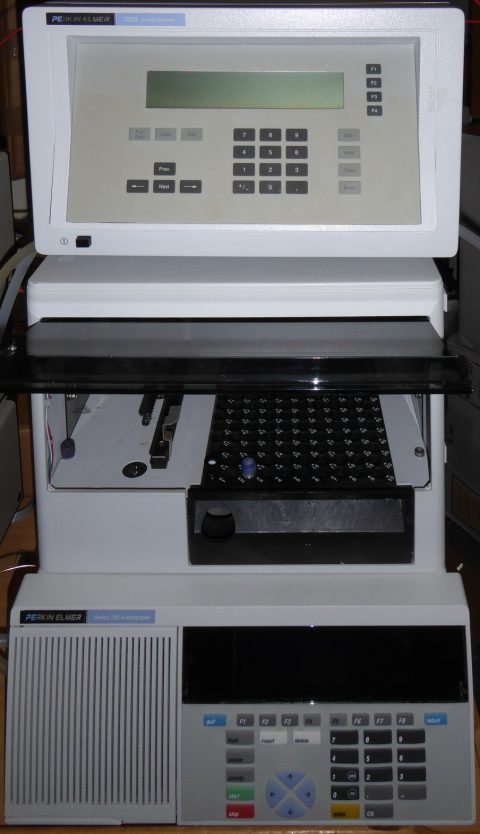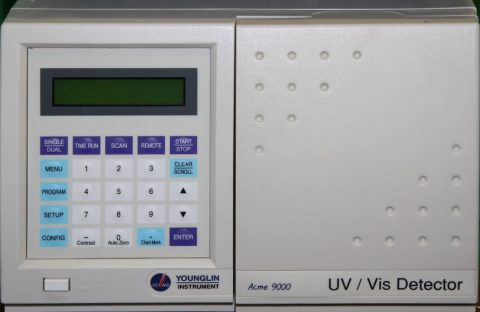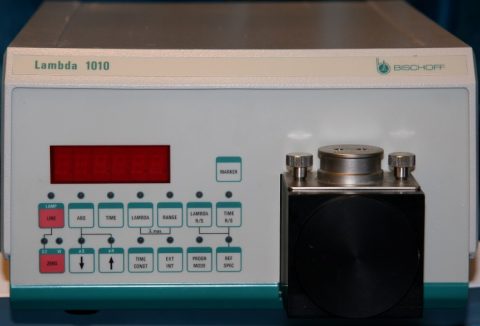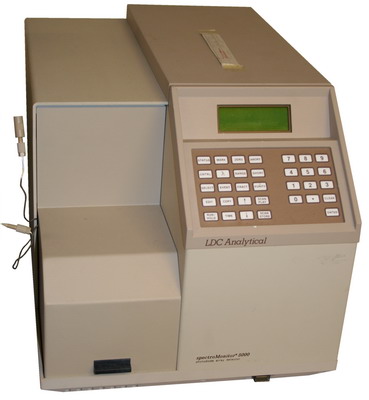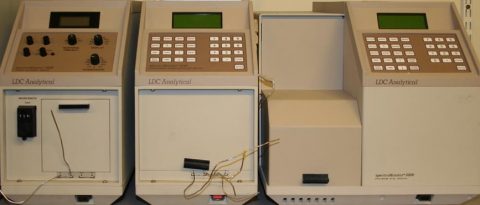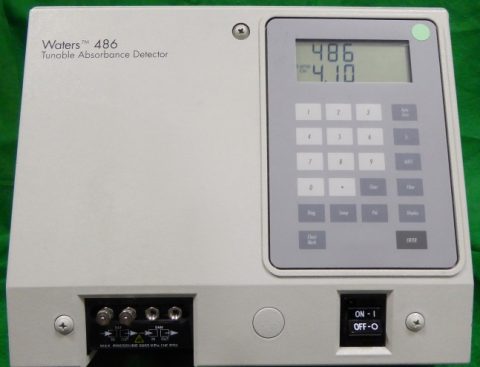Bischoff Lambda 1010 UV detector
Bischoff Lambda 1010 UV detector
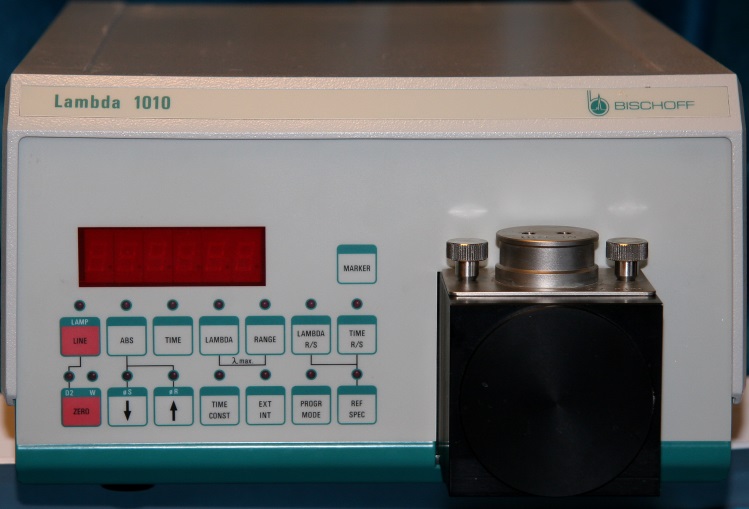
Bischoff Lambda 1010 UV detector
|
Simple operation conditions and compact design
The spectromonitor Lambda 1010 is a programmable UV/VIS detector for HPLC and CE. The advanced technology and the user friendly design of the instrument generate superb results in routine and more sophisticated chromatographic applications.Economical on lab space The spectromonitor Lambda 1010 is especially designed to save lab space. All components are selected under the highest quality standards and specifications to meet the demand for modern HPLC, LC an CE separation technologies. The high specifications and ease of use of the Lambda 1010 make it easy to use for a wide variety of applications.Sophisticated optics The design of the optical block enables the user to have access to all important parts (e.g. flow cell, lamp) without disturbing the stability of the spectromonitor Lambda 1010. The combination of low power electronics (low rise in temperature) and the compact and robust optical bench result in a remarkably compact instrument. The optical system is mounted on a separate base plate which is integrated into the housing. The lamp holder and the holder for the flow cell are outside the housing of the spectromonitor Lambda 1010. Therefore the interchange of flow cells of lamps is very easy. Sophisticated opticsThe flow cells are reproducibly fixed by two knurled screws. The lamps are prealigned and can be mounted without any further alignment. The light beam of the Deuterium lamp is focussed by a high quality quartz lens in the lamp holder on the entrance slit of the monochromator. The grating is moved with a DC-servo system, wavelength is measured by a high linearity potentiometer. To ensure the highest stability of the base line, the light beam leaving the monochromator passes through a beam splitter and 15% of the light is used to provide the stable reference signal.Applications The spectromonitor Lambda 1010 allows continuous variation in wavelength from 190 – 800 nm and in the range from 0.001 – 1.999 AUFS. Including the excellent values for stability and signal-to-noise ratio you will see effective detection even with the lowest sample concentrations.Wavelength switching For analyses of compounds which differ in their l max. and/or in concentration and therefore in the absorbance at the peak maximum, it is useful to switch the detection wavelength and the range during the chromatographic run according to the retention time of the compound. For complex mixtures the spectromonitor Lambda 1010 offers switching of l and range with up to 9 steps per program.Detection at the absorbance maximum To detect unknown compounds at their maximum absorbance, it is recommended to use the l max. wavelength. The spectromonitor Lambda 1010 offers the possibility to measure the UV-spectra of eluting peaks during the chromatogram withourt stop-flow. Measuring first the absorbance of the eluent and then the spectra of the separated compounds you will obtain the peak spectra by a subtraction process.Spectra With the spectromonitor Lambda 1010 you have the ability to measure a spectrum while the chromatogram is running. For this purpose a Rheodyne valve is used (e.g. RH7125) as a stream switching device. Instead of the sample loop, the inlet and outlet capillaries of the flow cell are connected to the valve. At the position Inject, the eluent is flowing through the valve and the flow cell continuously. At the peak maximum the valve is switched onto the position Load. The compound of interest is stopped in the flow cell for spectral measurement. During spectral measurement the eluent is still flowing through the column and the equilibrium is not disturbed.Baseline subtraction Gradient elutions often shows a base line drift, due to self absorbance of the eluent related to the wavelength. This effect is significant in the lower UV range. The spectromonitor Lambda 1010 allows you to memorize the baseline of the blank-gradient run and therefore to subtract it from the sample gradient run. As a result you get an increase in sensitivity and the identification of small chromatographic signals. Technology for today and tomorrow · Less eluent consumption for columns with smaller internal diameter for economic and ecological benefits. Using capillary columns, there is the need to detect the eluent directly on-column to avoid peakbroadening and any other extra column effect. This is possible with the capillary flow cell of the spectromonitor Lambda 1010 where the fused silica separation capillary is mounted in the light beam. The capillary flow cell for the spectromonitor Lambda 1010 is retrofitable. An additional calibration of the detector to adapt the flow cell is not needed. The self aligning optics of the capillary flow cell guarantee the adjustment of different capillary diameters to the optics of the detector. |
|
| Specifications | |
 Bischoff Lambda 1010 UV detector Wavelength range 190 – 800 nm Programming Conditions per line Recording spectra External control Temperature range Power requirements Dimensions Weight |
|

